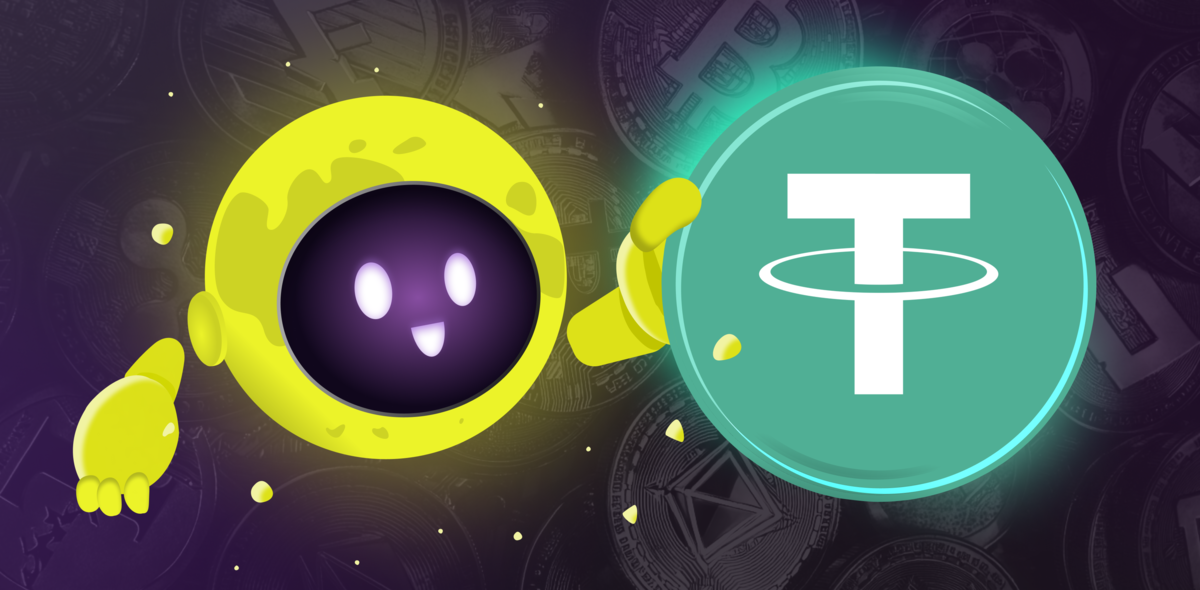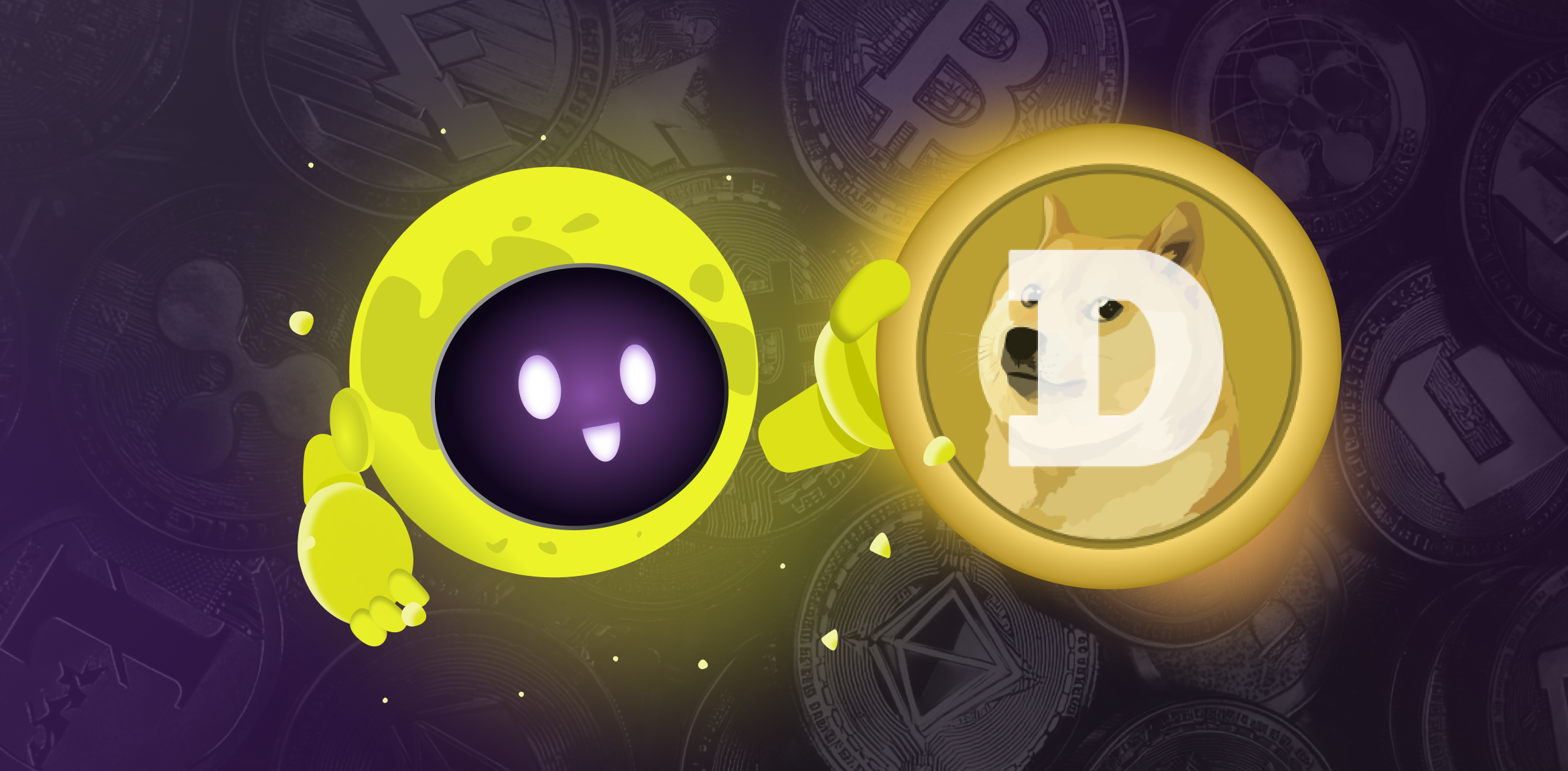
USDT is a stablecoin pegged 1:1 to the US dollar. It is the largest stablecoin by capitalization and can be named the most popular stablecoin on the cryptocurrency market, used for trading, investing, transferring funds, and making payments.
How does Tether (USDT) work?
The mechanism of USDT is quite simple at first glance, but in reality, it has a complex infrastructure. The main principle is to provide each USDT issued with a real US dollar stored in Tether Limited bank accounts. Initially, the ratio was assumed to be 1:1.
When Tether issues new USDT tokens, it must deposit an equivalent amount in US dollars. Conversely, when users "burn" USDT, returning them to the company, Tether Limited must release an appropriate amount of dollars.
USDT operates on various blockchains. Here are some of the most popular ones that are available for exchange on SwapSpace:
- Ethereum (ERC-20)
- Tron (TRC-20)
- Binance Smart Chain (BSC, BEP-20)
- Polygon
- Avalanche
- Solana
The History of USDT
USDT's history began in 2014, when Tether Limited introduced the concept of a stablecoin, a cryptocurrency with a fixed price, usually pegged to a fiat currency such as the US dollar at a 1:1 ratio to minimise price volatility. Over the years of development, Tether Limited has repeatedly become the object of close attention and even criticism from the financial community, but has continued to increase its market share.
Today, USD Tether crypto is the Top 1 stablecoin on the cryptocurrency market. Not surprisingly, the company holds the leading position and continues to develop USDT in dozens of various networks.
What makes USDT unique?
The uniqueness of USDT lies in its wide distribution, versatility, and stability. USDT is not just the largest stablecoin; it is a key infrastructure element of the cryptocurrency market, which, over the years of its dominance, in many ways, has formed standards of liquidity, accessibility, and integration for the entire market. Let us examine exactly what makes USDT unique among other stablecoins.
- Highest liquidity and global distribution. USDT has the most liquidity among other stablecoins; its daily trading volume stably exceeds even Bitcoin at a number of sites. Almost all cryptocurrency exchanges, exchangers, and DeFi platforms support USDT, which provides instant execution of warrants, narrow spreads, and the ability to work with large volumes without significantly affecting prices.
- Multi-blockchain ecosystem and technological flexibility. Unlike competitors, USDT is produced immediately on many blockchains: Ethereum (ERC-20), Tron (TRC-20), Solana, Polygon, Arbitrum, and others. This gives users a choice between speed, transaction cost, and compatibility with different ecosystems.
- Universality. The USDT is used not only for trading but also for cross-border payments, DeFi, staking, lending, settlements between companies, and even in countries with unstable national currencies. In countries with high inflation, such as Argentina, Turkey, and Nigeria, the USDT has become a way to protect savings.
- Ease of use and availability. The USDT-enabled wallet and exchange interface is intuitive, making it accessible to newcomers without requiring deep technical knowledge to work with the token.
Why is USDT valuable?
The nature of USDT value is the same as fiat currencies. People trust in its value and want to use it. In addition, Tether states that for every USDT in circulation, there is a real US dollar or other collateral in Tether bank accounts, thereby ensuring its value.
Tether cryptocurrency also plays a crucial role as a bridge between traditional finance and the crypto world, allowing users to move funds seamlessly between exchanges, hedge against volatility, and access decentralized finance (DeFi) applications.
How much USDT is currently in circulation?
As of April 2025, there are over 144 billion USDT tokens in circulation, making it the largest and most widely used stablecoin in market capitalization. This massive supply reflects demand for a stable liquid digital asset that can be used across multiple blockchains and exchanges.
Why is USDT stable?
Tether regularly,–2-6 times a year, audits its balance sheets to ensure USDT stability. However, its public records state that the reports are not financial statements and represent unaudited financial information extracted from the accounting records.
Tether also states that USDT capitalization is based on the provision of all combined assets used as collateral, including the dollar, euro, yuan, gold, corporate bonds, and other collateral assets.
The controversy and risks around USDT
Despite the popularity of USDT, there is one big question over Tether and its stablecoin. The fact is that the information surrounding the provision of the USDT stablecoin remains opaque, and the company does not disclose it to the public or provide false data.
According to the results of the Bloomberg investigation into Tether, it was possible to find the name of one of the banks where the company stores approximately $15 billion in funds. It is the Deltec Bank and Trust, which is based in the Bahamas.
Later, Bloomberg learned that a significant part of Tether's reserves were short-term loans to large Chinese companies, which, according to the publication's report, were considered risky. If even a small portion of the loans is not repaid by borrowers, the USDT stands a good chance of losing its peg to the US dollar. The loss of the peg will, in turn, lead to a massive sell-off of stablecoins, which will result in Tether being unable to fulfil its obligations to customers (i.e., it will be unable to pay them in USD), which could lead to the following depeg.
Legal status and regulation of USDT in Europe
In Europe, a ban and strict regulation of the USDT (Tether) stablecoin have been introduced under the new EU Markets in Crypto-Assets (MiCA) regulation. The MiCA establishes strict requirements for stablecoin issuers, including mandatory licensing as electronic money institutions, maintaining reserves in recognized banks, and ensuring transparency with regular reserve audits.
The USDT has been criticized for its lack of transparency about reserves and non-compliance with new MiCA requirements, raising concerns among European regulators about financial stability and consumer protection. As a result, many crypto exchanges in Europe have begun to remove USDT from listings to meet new standards and avoid regulatory risks. For example, Coinbase announced the delisting of the USDT for European users.
Thus, in Europe, USDT is banned for use on regulated sites, and its future depends on Tether's ability to adapt to MiCA requirements or the emergence of new stablecoins that fully comply with European standards
How is USDT used?
Because of its wide popularity, USDT in the cryptocurrency market is used for all purposes except speculation, as its course has remained almost unchanged throughout its history. The main purposes for which USDT is used are:
- Cryptocurrency trading: The main application of USDT is cryptocurrency exchange trading. USDT is used as the base currency for most trading pairs, allowing traders to buy and sell other cryptocurrencies quickly and conveniently.
- Hedge against market volatility: Investors use USDT to protect themselves from market volatility. During periods of market decline, assets can be transferred to the USDT to maintain their value in dollar equivalents.
- Arbitration: The stability of the USDT rate makes it an ideal tool for arbitration strategies, allowing traders to profit from the differences in rates of different exchanges.
- International translations: USDT is a convenient and inexpensive tool for international translations. USDT transfers are carried out quickly and at low fees, making them attractive alternatives to traditional bank transfers.
- Online Payments: Some online services and stores accept USDT as a payment for goods and services. This allowed us to use cryptocurrencies for everyday purchases.
- Loans and lending: In decentralized finance (DeFi), USDT is often used as collateral to obtain loans or provide liquidity on decentralized exchanges and lending platforms.
- Withdrawal of funds from exchanges: USDT is often used to withdraw funds from cryptocurrency exchanges through P2P trading.
How to choose a Tether (USDT) wallet
When choosing a wallet, we consider the security, ease of use, and compatibility with the preferred blockchain. Here are the 3 most popular options:
- Trust Wallet is a non-custodial service that supports USDT and many other cryptocurrencies. Seamless integration with the parent exchange and the Coinbase platform simplifies the crypto transfer between the wallet and these sites. The service can be downloaded as an application or installed as a browser.
- MetaMask is available as a browser extension and a smartphone application. Unlike most large crypto wallets, this service offers anonymous account management. No verification is required during registration. The USDT is not on the default currency list, but you can add it yourself.
- Exodus is a multichain service that supports more than 50 networks. Its functionality includes NFT and Web3 applications management, swaps, and staking. Exodus wallet is available for smartphones and desktop devices. USDT is added manually through the "add" button in the portfolio, which can be done immediately after creating an account.
The difference between USDT and Bitcoin
Nature of the asset
- Bitcoin: a decentralized cryptocurrency that functions as an independent coin on its own blockchain.
- USDT: Centralized stablecoin (token) tied to fiat reserves (US dollar) and third-party blockchains (Ethereum, Tron, etc.).
Security and stability
- Bitcoin: The cost is determined by supply and demand and is subject to high volatility.
- USDT: Backed by fiat reserves (1 USDT ≈ 1), which minimize price volatility.
- Other stablecoins: For example, the USDC or DAI are also tied to fiat/assets but can use different collateral mechanisms.
Technical implementation
- Bitcoin transactions are processed in their own blocks of the Bitcoin blockchain using the proof-of-work protocol.
- USDT: It does not have its own blockchain; it is produced as a token in third-party networks (Ethereum, Tron, etc.).
- Other tokens: For example, UNI (Uniswap) or Chainlink (LINK) also use the infrastructure of other blockchains.
Different use
- Bitcoin: A tool for storage value ("digital gold") and a payment network.
- USDT: A tool for hedging volatility and payments
- Altcoins: Can perform narrow functions (e.g., smart contracts, DAO management).
Summary
Stablecoins are an integral part of the cryptocurrency market, and USDT has been a market leader for a long time. It became a powerful tool that helps traders quickly gain access to the stability of the traditional market, without resorting to fiat money and banks. Despite the controversy surrounding the coin, USDT is becoming even more popular in times of financial instability.
FAQ
What is USDT?
USDT is a digital token created by Tether Limited. Each USDT token is backed by real US dollar reserves held in special company accounts. This ensures exchange rate stability and minimising volatility.
What is a USDT payment?
A USDT payment is a transfer of USDT tokens from one person or organisation to another through a blockchain characterised by low fees and high speed.
What is Tether?
Tether Limited is the company that issues the USDT token.
What does USDT stand for?
USDT stands for United States Dollar Tether.
What is USDT currency?
USDT is a stablecoin that allows people to exchange money quickly and securely, avoiding the volatility of most cryptocurrencies.




